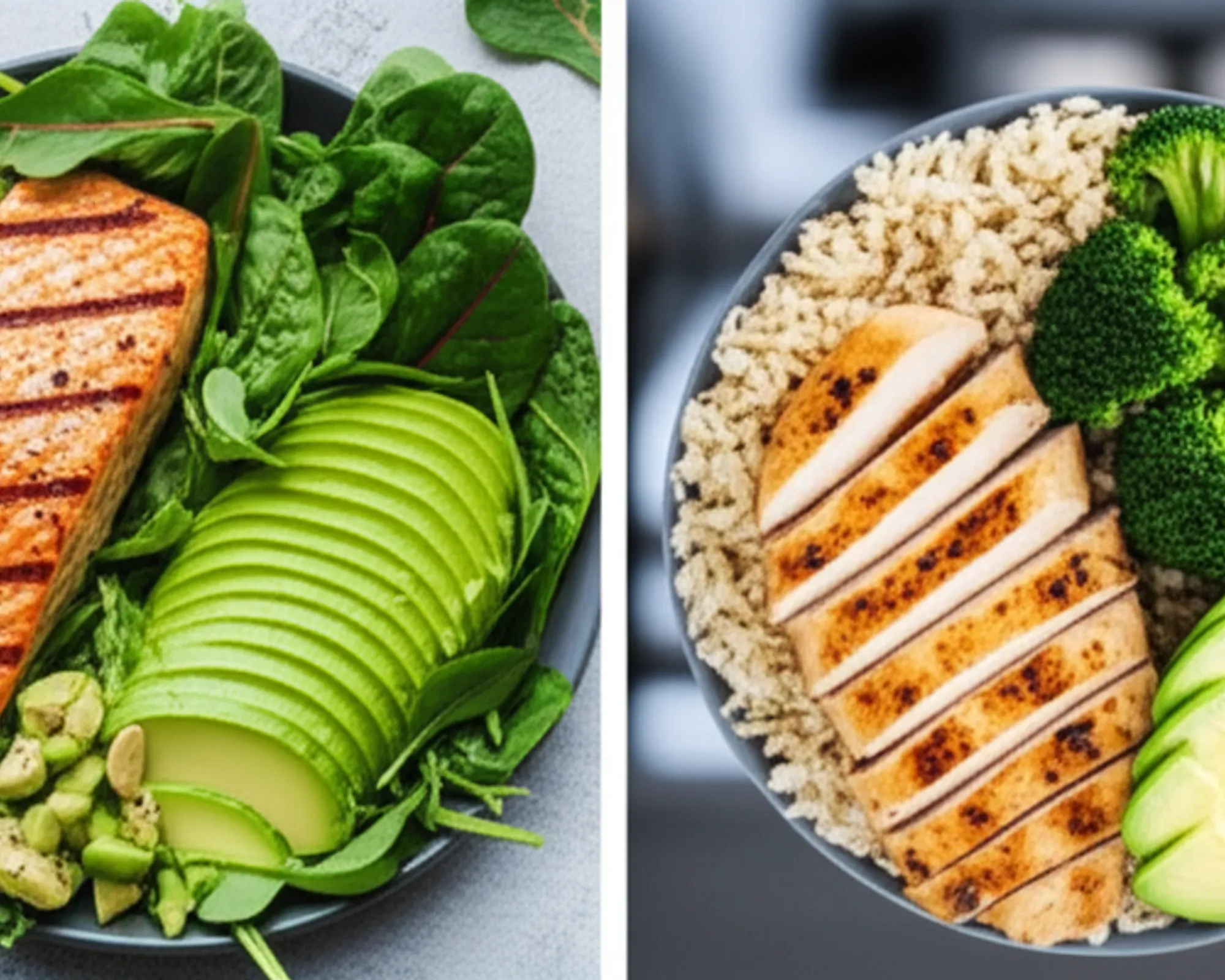How to Calculate a Calorie Deficit with Macros

The Ultimate Guide to Calculating a Calorie Deficit with Macros
Embarking on a weight loss journey often feels like navigating a complex maze. You hear terms like "calorie deficit" and "macros" thrown around, and it's easy to get overwhelmed. But what if there was a clear, actionable path to understanding and implementing these concepts for effective, sustainable fat loss? Good news: there is! This comprehensive guide will break down exactly how to calculate your calorie deficit and strategically align your macronutrients to achieve your body composition goals.
At its core, weight loss boils down to consuming fewer calories than your body burns – this is the calorie deficit. However, simply eating less isn't always the most effective or healthy approach. The quality of those calories, specifically where they come from (protein, carbohydrates, and fats), plays a crucial role not only in losing weight but also in preserving muscle mass, maintaining energy levels, and supporting overall health. By mastering the art of combining a calorie deficit with an optimal macronutrient breakdown, you unlock the secret to transforming your body efficiently and sustainably.
Understanding Your Calorie Baseline: BMR and TDEE
Before you can create a deficit, you need to know your body's baseline energy needs. This involves two key figures: your Basal Metabolic Rate (BMR) and your Total Daily Energy Expenditure (TDEE).
Basal Metabolic Rate (BMR)
Your BMR is the number of calories your body burns at rest to perform basic life-sustaining functions – breathing, circulation, cell production, nutrient processing, etc. Think of it as the energy required just to keep the lights on. Several formulas can estimate your BMR, with the Mifflin-St Jeor equation being one of the most widely used and accurate:
- For Men: (10 x weight in kg) + (6.25 x height in cm) - (5 x age in years) + 5
- For Women: (10 x weight in kg) + (6.25 x height in cm) - (5 x age in years) - 161
Alternatively, the Harris-Benedict equation is another popular choice:
- For Men: 66.5 + (13.75 x weight in kg) + (5.003 x height in cm) - (6.75 x age in years)
- For Women: 655.1 + (9.563 x weight in kg) + (1.850 x height in cm) - (4.676 x age in years)
To use these formulas, you'll need your weight in kilograms (pounds / 2.2046) and height in centimeters (inches x 2.54). Calculate your BMR first, as this is the foundation for your TDEE.
Total Daily Energy Expenditure (TDEE)
Your TDEE is the total number of calories your body burns in a day, including your BMR plus the calories expended through physical activity, digestion, and non-exercise activity thermogenesis (NEAT). To estimate your TDEE, you multiply your BMR by an activity factor:
- Sedentary (little or no exercise): BMR x 1.2
- Lightly active (light exercise/sports 1-3 days/week): BMR x 1.375
- Moderately active (moderate exercise/sports 3-5 days/week): BMR x 1.55
- Very active (hard exercise/sports 6-7 days/week): BMR x 1.725
- Extra active (very hard exercise/physical job/training twice a day): BMR x 1.9
Your TDEE is the magic number. This is the estimated calorie intake required to maintain your current weight. To lose weight, you'll need to eat below this number.
Crafting Your Calorie Deficit
Now that you know your TDEE, it's time to create the deficit. A commonly recommended and safe deficit for sustainable fat loss is 500 calories per day. This aims for approximately 1 pound of fat loss per week, as 1 pound of fat is roughly equivalent to 3,500 calories (500 calories/day x 7 days/week = 3,500 calories/week). So, if your TDEE is 2500 calories, your target daily intake for weight loss would be 2000 calories (2500 - 500).
While a 500-calorie deficit is a great starting point, the optimal deficit can vary based on individual factors like current body fat percentage, activity level, and how quickly you want to lose weight. For individuals with a higher body fat percentage, a slightly larger deficit might be appropriate, while leaner individuals should opt for a smaller deficit to minimize muscle loss. Avoid overly aggressive deficits (more than 750-1000 calories below TDEE) as they can lead to muscle loss, nutrient deficiencies, fatigue, and make adherence extremely difficult. The goal is sustainable progress, not rapid, unhealthy deprivation.
The Power of Macronutrients: Protein, Carbs, and Fats
Once you have your target calorie deficit, the next crucial step is to break down those calories into macronutrients: protein, carbohydrates, and fats. Each plays a distinct and vital role in your body, especially during a calorie deficit.
- Protein: The building block of muscle. Adequate protein intake is paramount during a calorie deficit to preserve lean muscle mass. Muscle is metabolically active, meaning it burns more calories at rest than fat. Losing muscle while dieting can hinder your long-term metabolism. Protein also promotes satiety, helping you feel fuller for longer. Each gram of protein contains 4 calories.
- Carbohydrates: Your body's primary source of energy. Carbs fuel your workouts, daily activities, and brain function. While often demonized, quality carbohydrates (whole grains, fruits, vegetables) provide essential fiber, vitamins, and minerals. During a deficit, strategic carb intake ensures you have enough energy without overshooting your calorie target. Each gram of carbohydrate contains 4 calories.
- Fats: Essential for hormone production, nutrient absorption (especially fat-soluble vitamins A, D, E, K), and overall cellular health. Healthy fats are crucial even when dieting. However, fats are calorie-dense, providing 9 calories per gram, so careful tracking is necessary.
Calculating Your Macros for a Deficit
Here's how to distribute your total daily calories among protein, fats, and carbohydrates:
1. Set Your Protein Target
This is often the most important macro for weight loss, particularly for muscle preservation. A good starting point is 0.8 to 1 gram of protein per pound of your target body weight (or current lean body mass). If you're very active or aiming for maximum muscle preservation, you might even go up to 1.2 grams per pound. For example, if your target weight is 150 lbs, aim for 120-150 grams of protein per day. Let's use 150 grams for our example. That's 150g x 4 calories/gram = 600 calories from protein.
2. Set Your Fat Target
Fats are essential for health, but also calorie-dense. A healthy range is typically 20-30% of your total daily calories, or 0.25 to 0.35 grams per pound of body weight. For our 150 lb example, let's aim for 0.3 grams/lb: 150 lbs x 0.3g/lb = 45 grams of fat. That's 45g x 9 calories/gram = 405 calories from fat.
3. Fill the Remainder with Carbohydrates
Once you've allocated calories to protein and fats, the rest of your daily calorie allowance goes to carbohydrates. Let's say your target calorie intake is 2000 calories per day:
- Total Calories: 2000 kcal
- Calories from Protein: 600 kcal
- Calories from Fat: 405 kcal
- Remaining Calories for Carbs: 2000 - 600 - 405 = 995 kcal
Now, convert these calories back into grams: 995 kcal / 4 calories/gram = 248.75 grams of carbohydrates. So, your macros would be approximately: Protein 150g, Fat 45g, Carbs 249g.
Practical Tips for Success
Calculating is one thing; adhering is another. Here are some practical tips to help you stay on track:
- Track Your Intake: Use a food tracking app (like MyFitnessPal, Cronometer, or Lose It!) and a kitchen food scale. This is non-negotiable for accuracy, especially when starting out. Eyeballing portions leads to underestimation.
- Prioritize Whole Foods: Focus on nutrient-dense foods like lean proteins, fruits, vegetables, whole grains, and healthy fats. These will keep you fuller, provide essential nutrients, and are generally less calorie-dense than highly processed options.
- Meal Prep: Preparing your meals in advance can save time and prevent impulsive, unhealthy food choices.
- Stay Hydrated: Often confused with hunger, thirst can lead to unnecessary snacking. Drink plenty of water throughout the day.
- Be Patient and Consistent: Weight loss is not linear. There will be fluctuations. Consistency over time is what yields results. Don't get discouraged by daily scale readings.
- Adjust as Needed: Your body adapts. If weight loss stalls for 2-3 weeks, you may need to slightly decrease your calories (e.g., another 100-200 calories) or increase your activity. Re-calculate your TDEE periodically as your weight changes.
- Listen to Your Body: If you're constantly ravenous, overly fatigued, or experiencing poor recovery from workouts, your deficit might be too aggressive. Consider slightly increasing your intake.
- Consider Professional Guidance: If you have underlying health conditions or feel overwhelmed, consulting a registered dietitian or certified nutritionist can provide personalized guidance.
Conclusion
Calculating a calorie deficit with macros is a powerful, science-backed approach to achieving sustainable weight loss while optimizing body composition. By understanding your unique energy needs, strategically creating a calorie deficit, and thoughtfully distributing your protein, fats, and carbohydrates, you gain control over your journey. Remember, this isn't about restriction; it's about intelligent nutrition that fuels your body, supports muscle, and helps you achieve your fitness goals effectively. Start small, be consistent, and watch your body transform!


